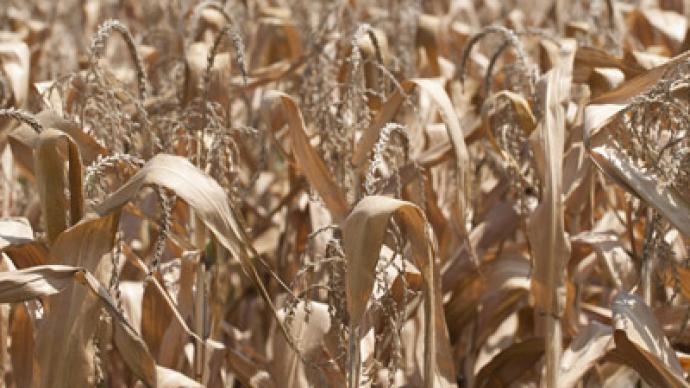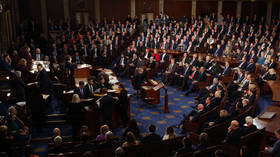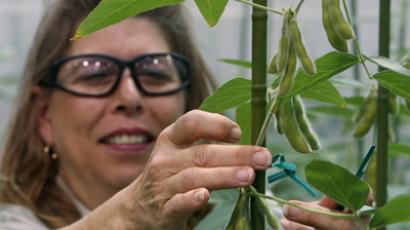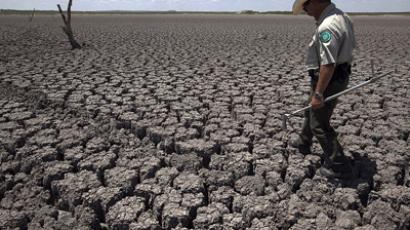Record drought may leave more Americans hungry

This summer’s record-breaking drought may force millions of Americans to skip meals next year, as the cost of groceries is expected to rise.
The worst drought since the 1930’s Dust Bowl is taking a toll on US-grown crops, particularly corn, soybean and wheat harvests. More than 80 percent of agricultural land has been affected by the heat wave. It takes 10-12 months for these products to reach supermarket shelves, causing the shortage to be felt most severely in 2013.More than 18 percent of Americans are already struggling to afford food, and a spike in grocery store food prices could worsen their already dismal situations, making hunger an even greater epidemic. One in six Americans already skip food for long periods of time, sometimes staying hungry for days.Poorer Americans are also spending larger percentages of their income on food, with high-income earners allocating 11.7 percent on food and low-income earners spending more than 16 percent.A Gallup study found that in some states, nearly a quarter of the population does not have enough money for food. Mississippi holds the record, where 24.9 percent of citizens are too poor to put enough food on the table.World leaders say there is enough food to feed both the US and the world.“We are not saying that we anticipate a major crisis at this point,” said Juergen Voegele, director of the World Bank’s Agricultural and Rural Development Department.But aside from the rising cost of food, the Natural Resources Defense Council (NRDC) also found that Americans are throwing away 40 percent of all food in the country. That’s more than 20 pounds (9 kg) of thrown away food, per person per month.Fruits and vegetables are thrown away at an even higher rate, with 52 percent of them ending up in the garbage.“As a country, we’re essentially tossing every other piece of food that crosses our path – that’s money and precious resources down the drain,” said NRDC project scientist Dana Gunders. “With the price of food continuing to grow, and drought jeaopardizing farmers nationwide, now is the time to embrace all the tremendous untapped opportunities to get more out of our food system. We can do better.”If 15 percent less food were wasted, 25 million more Americans would be able to secure food on their tables, and the post-drought food shortage would take less of a toll on the wallets of the poorest citizens.














